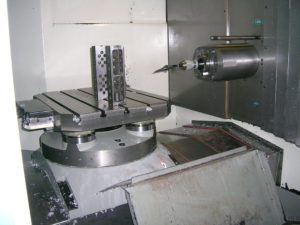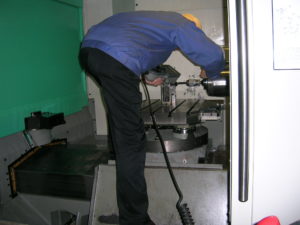Fault:
The process of the tool exchange was interrupted accidentally and the tool on the spindle was stuck on the gripper of the tool magazine.
Remedy:
After restart the axes of the machine still could not be moved.
In the menu Deckel Maho/Manual control/Tool change, Pressed a key by graphic (right one) and heard and saw the gripper was released. Pressed the red emergency stop push button to make off the drives’ power. Turned the lead screw with hand to make the spindle and cutter out of the tool change area.
Turned off and on the machine. Reinstalled PLC. Restarted the machine. Made the axis X return to the reference point. At this moment the small door for tool change closed automatically and the machine restored to normal.


_Page_008-212x300.png)
_Page_077-300x212.png)
_Page_078-300x212.png)
_Page_106-300x212.png)